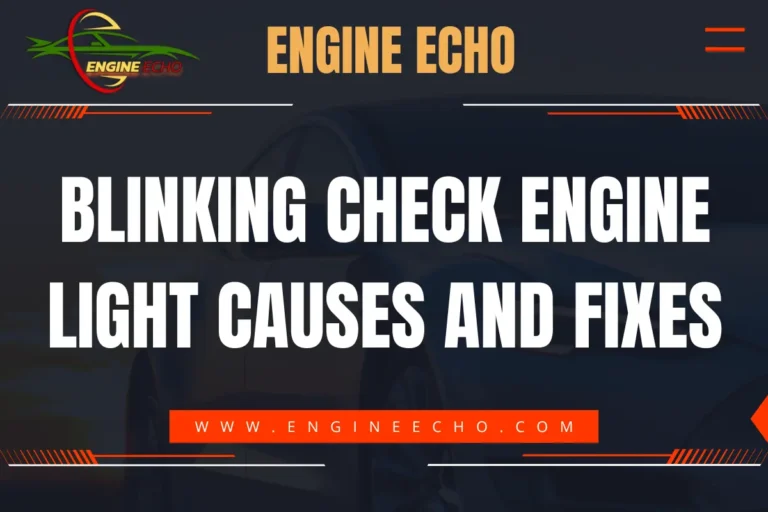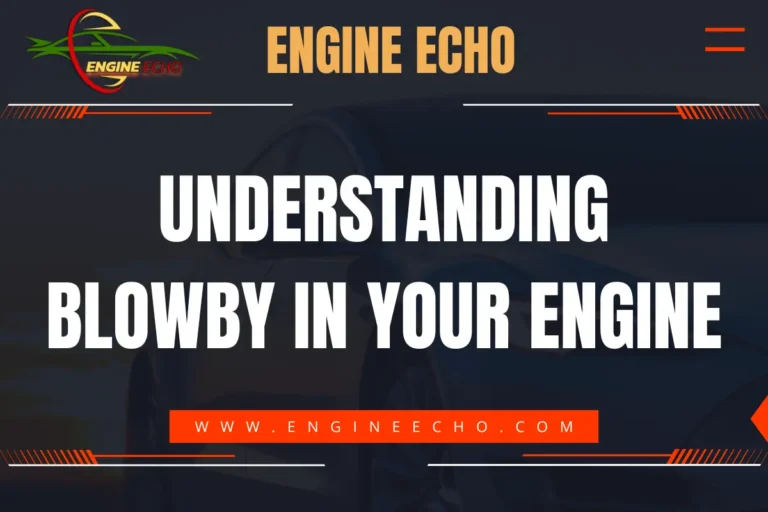What Is Engine Boring and Why It Matters?

Key Takeaways:
- Engine boring helps restore engine efficiency by resizing worn cylinders.
- It can significantly enhance engine performance by increasing displacement.
- Precision is essential during boring to avoid damaging the engine block.
- Boring increases horsepower and torque, making it a popular choice for performance tuning.
- Misalignment or over-boring can weaken the engine structure and reduce longevity.
Introduction
Every vehicle’s power comes from its engine, and keeping it in top shape is key. But let’s be honest—engines don’t stay perfect forever. Over time, they lose their edge, and if you’re noticing a drop in power or efficiency, engine boring might be the answer. For me, when I think about bringing back that lost power or even pushing the performance to the next level, engine boring is one of the first things that comes to mind.
This article will walk you through what engine boring is, why it matters, and how it can take your engine from tired and sluggish to powerful and efficient. Whether you’re fixing a worn-out engine or looking to squeeze out more horsepower, understanding engine boring is essential.
1. Key Takeaways
- Engine boring is a key process for both restoring and enhancing engine performance.
- It plays a vital role in engine rebuilding, smoothing out worn cylinders or increasing displacement for more power.
- Precision is everything during boring to avoid costly mistakes and damage.
- Boring boosts horsepower and torque, making it a go-to option for performance enthusiasts.
- Misalignment or over-boring can reduce engine strength, so it’s crucial to get it right.
2. Why Is Engine Boring Done?
There are really two big reasons to get engine boring done: fixing up an old engine and boosting performance. If you’re rebuilding, those cylinder walls wear down—it just happens. If your engine’s feeling sluggish or isn’t performing like it used to, chances are, boring can help restore that lost power.
Then there’s the performance side. If you’re like me and want more power, boring the engine can be a game-changer. By enlarging the cylinders and fitting larger pistons, you increase the engine’s displacement. More displacement means more power—it’s that simple. Whether it’s for a track day or just wanting to feel that extra push when you hit the gas, engine boring can take your car to the next level.
3. How Engine Boring Works
When you bore an engine, you’re basically shaving off just a bit of the cylinder walls to make them wider. And when I say “just a bit,” I mean it—this is precision work. Even a tiny change in size can have a big impact. The process itself might sound straightforward, but the precision and care required make it an art form. The cylinder must remain perfectly round and aligned with the crankshaft, or you could end up with more problems than you started with.
For me, seeing an engine before and after it’s been bored is almost magical. You go from a rough, uneven cylinder to a smooth, polished surface that’s ready for action. Every millimeter counts when you’re chasing performance gains or restoring efficiency.
4. Types of Engine Boring
There are two types of boring I’ve encountered most often:
- Standard Boring: This is what you’ll do during a rebuild to bring the cylinder back to its original size after wear. It’s crucial for restoring performance and efficiency.
- Over-Boring: If you’re chasing performance like I often do, over-boring is the way to go. By increasing the cylinder diameter beyond its original size, you create more room for combustion, leading to significant horsepower and torque gains. It’s a go-to for anyone serious about getting more out of their engine.
5. Tools and Equipment for Engine Boring
When it comes to boring, you can’t cut corners with tools. Here’s what you need to get it right:
- Boring Bar: This is the main tool for boring, and trust me, it’s not something you want to skimp on. Precision is key here.
- Dial Bore Gauge & Micrometer: These tools are vital for making sure your measurements are spot-on. Every tiny detail counts when you’re enlarging the cylinder.
- Honing Tools: Once you’ve bored the cylinder, honing ensures the walls are smooth and ready for the piston rings to seal properly. It’s like the finishing touch that makes everything come together.
From my experience, using the right tools can make or break the job. I’ve seen the results of poorly bored engines, and it’s not pretty—it’s why precision is non-negotiable.
6. Benefits of Engine Boring
Engine boring comes with some serious perks, especially if you’re into squeezing the most performance out of your engine:
- Increased Engine Displacement: One of the best perks of engine boring is the increase in displacement. More displacement means more air and fuel can enter the combustion chamber, and you know what that means—more power.
- Restored Efficiency: If your engine is worn, boring smooths out the cylinders, bringing back lost compression and efficiency. I’ve seen older engines roar back to life after a good boring job.
- Extended Engine Life: Boring can extend the life of an engine that’s seen better days. Instead of replacing the entire engine, a precise boring job can make it run like new.
7. Risks of Engine Boring
Of course, there are risks, and they’re worth mentioning. I’ve always stressed the importance of precision, and here’s why:
- Over-Boring: Boring too much can weaken the engine block. I’ve seen engines fail because they were bored beyond what the block could handle. The extra power you gain isn’t worth it if the engine’s structural integrity is compromised.
- Misalignment: If the boring process isn’t perfectly aligned, you could end up with uneven wear, which can reduce performance and shorten the engine’s life. Precision tools and experienced hands make all the difference.
8. Engine Boring vs. Honing
People sometimes confuse boring with honing, but they’re two different processes. Boring is about removing material to change the size of the cylinder, while honing smooths the surface to ensure a good piston ring seal. I’ve always found that honing complements boring perfectly—you can’t have one without the other if you want the engine running its best.
9. Engine Boring for Performance Upgrades
For performance upgrades, engine boring is the real deal. I’ve personally had engines bored to increase displacement, and the difference is night and day. You get more torque, more horsepower, and a whole lot more excitement every time you hit the throttle. It’s one of those upgrades that’s worth every penny if you’re serious about performance.
10. Costs of Engine Boring
Let’s face it, engine boring isn’t exactly cheap, but it’s still way more affordable than swapping out the whole engine. Depending on your setup and the shop, you’re looking at somewhere between $200 and $500 per cylinder, but trust me, the results are worth it. Sure, you could try a DIY approach, but without the right tools and experience, you risk doing more harm than good. Leave this one to the pros.
11. When Should You Consider Engine Boring?
You should consider engine boring when:
- Your engine shows signs of wear: If your engine’s losing power, consuming more oil, or suffering from poor compression, it might be time to bore the cylinders and restore its performance.
- You’re looking to boost performance: If you’re building a performance engine and want more power, boring is one of the most effective ways to increase displacement and get more out of your engine.
12. Alternatives to Engine Boring
If boring isn’t an option or if the engine is too far gone, here are a couple of alternatives:
- Cylinder Sleeving: Sometimes, adding a cylinder sleeve to restore the original size is a better option than boring, especially if you want to preserve the engine block.
- Engine Replacement: In cases of severe damage, replacing the engine might be the only viable solution.
13. Case Studies: Success Stories of Engine Boring
One of my favorite examples of engine boring’s potential is a V8 I had bored for a performance build. By increasing the displacement, we managed to push out an extra 50 horsepower. The first time I drove it after the build, I knew it had been worth every dollar and every minute spent. That extra power was felt in every gear, and the engine felt more alive than ever.
Conclusion
Engine boring might not be the first thing that comes to mind, but when it’s done right, it can really take your engine to the next level. Whether you’re breathing new life into an old motor or chasing more power, boring is a key move. Trust me—your engine will thank you for it.
FAQs
1. What’s the difference between boring and stroking an engine?
Boring increases the cylinder diameter, while stroking changes the crankshaft to increase the length of the piston’s stroke.
2. Can engine boring increase horsepower?
Absolutely! Increasing the cylinder diameter allows for more air and fuel, leading to greater power.
3. How much does engine boring typically cost?
It can cost between $200 and $500 per cylinder, depending on engine type and machine shop rates.
4. Is engine boring always necessary during engine rebuilds?
Not always, but if the cylinders are worn out or you’re aiming for performance gains, it’s often a good idea.
5. How much can you safely bore an engine?
The amount you can bore depends on the engine block’s material and design, but it’s important not to overdo it to avoid weakening the block.
Thanks for checking out this article on EngineEcho.com! Hope you found this article: "What Is Engine Boring and Why It Matters?" helpful! If you liked it and want to dive into more car engine topics, head over to our homepage. There's always something new to discover in the world of engines. Enjoy your reading journey!
Check out our previous article: Ford EcoBoost Engine Recall: What You Need to Know






